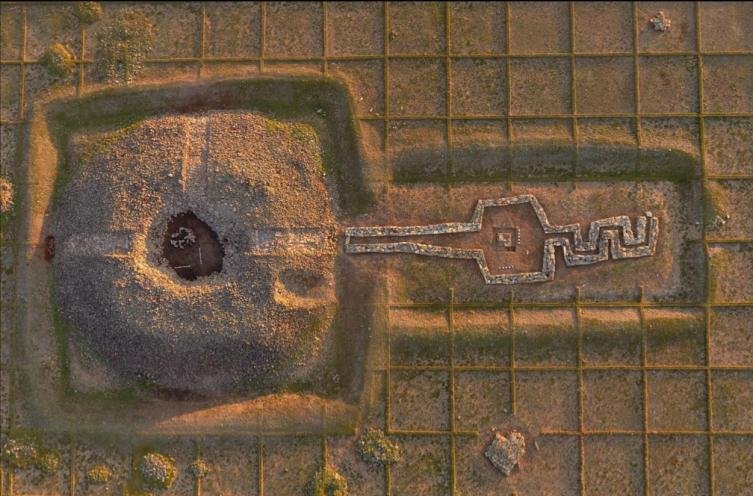Researchers have turned their attention to the mysterious Mongolian Arc, a section of the Great Wall of China that stretches 405 kilometers into Mongolia, referred to as the “Mongolian Arc” due to its distinctive curved trajectory. The research, detailed...
Researchers have turned their attention to the mysterious Mongolian Arc, a section of the Great Wall of China that stretches 405 kilometers into Mongolia, referred to as the “Mongolian Arc” due to its distinctive curved trajectory. The research, detailed in the Journal of Field Archaeology, marks the first comprehensive analysis of this enigmatic structure.
 Drone photo of Khaltaryn Balgas (MA21), located 17?km away from the wall line. Credit: Journal of Field Archaeology, 2023
Drone photo of Khaltaryn Balgas (MA21), located 17?km away from the wall line. Credit: Journal of Field Archaeology, 2023
The Mongolian Arc, characterized by an earthen wall, a trench, and 34 structures, has long confounded historians regarding its age, builders, and purpose. According to the study, historical records from the 11th to 13th centuries mention the wall, but its exact timeline remains uncertain. Winter temperatures as low as -25 degrees Celsius in northeastern Mongolia, where the wall extends, add to the challenges of understanding its origins.
In an effort led by archaeologists from the Hebrew University of Jerusalem in Israel and the National University of Mongolia, Researchers utilized a multidisciplinary approach, combining satellite images, Chinese atlases, Soviet maps, and on-site observations to analyze the wall and associated structures.
The team highlighted the lack of previous research on the Mongolian Arc compared to its Chinese counterpart, attributing this to uncertainties, remote locations, and a lack of visual grandeur.
 Map of the Mongolian Arc wall line marking the locations of structures and water sources along the wall line. Credit: Journal of Field Archaeology, 2023
Map of the Mongolian Arc wall line marking the locations of structures and water sources along the wall line. Credit: Journal of Field Archaeology, 2023
A significant revelation was the presence of numerous large gaps, indicating a hurried construction and a lack of full fortification. This led to a theory suggesting that the Mongolian Arc might have been hastily erected during the final years of the Jin dynasty as a defense against impending Mongol invasions.
The study also proposed an alternative idea that the wall might not have had a military function but rather served to control the movement of people, animals, and potentially functioned in taxation.
Despite these theories, researchers acknowledge the need for further excavation to determine construction dates, duration of use, and the activities of people stationed at the wall. Despite its size and complexity, questions persist about whether it was built in one phase or over an extended period.
 Artifacts collected on the surface of Khaltaryn Balgas (MA21). Credit: Journal of Field Archaeology, 2023
Artifacts collected on the surface of Khaltaryn Balgas (MA21). Credit: Journal of Field Archaeology, 2023
While these studies provide unprecedented information, the purpose of the Mongolian Arc remains elusive. Whether the wall served as a hurried defense against invaders or played a role in shaping the geological and economic landscape, it continues to captivate researchers.
The post Mysterious Mongolian Arc studied for the first time appeared first on Archaeology News Online Magazine.





![Eleventh Hour Enigma – Tulsa Time [Review]](https://roomescapeartist.com/wp-content/uploads/2024/09/eleventh-hour-enigma-tulsa-time-4.jpg)









